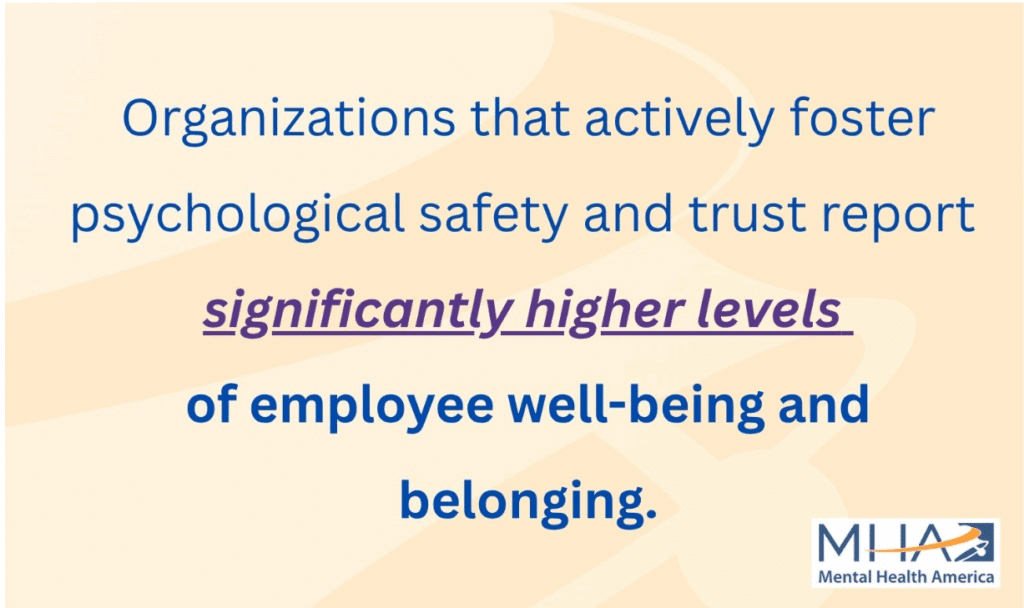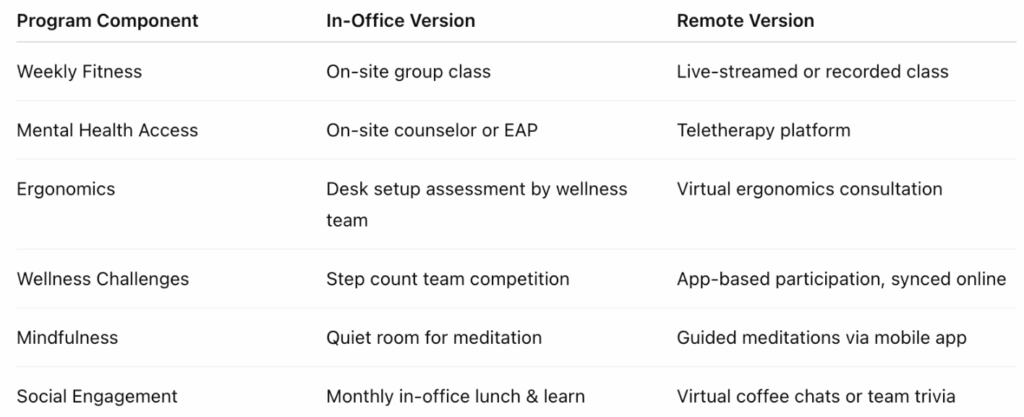The shift toward hybrid work environments has transformed how, when, and where we work and also how companies think about employee wellness. While hybrid models offer greater flexibility and autonomy, they also come with new challenges including digital fatigue, blurred boundaries, isolation, and inconsistent access to support systems.
For organizations invested in long-term workforce health and productivity, adapting corporate wellness strategies to fit the hybrid model isn’t optional—it’s essential. Here’s a look at why wellness programs need to evolve alongside work models and how employers can deliver effective, inclusive support to both in-office and remote employees.
Why Hybrid Work Changes the Wellness Equation
Hybrid work arrangements typically help employees to split their time between home and the office. While this flexibility can lead to better work-life balance and greater autonomy, it also creates a fragmented employee experience that traditional wellness programs weren’t designed for. Common wellness challenges in hybrid environments include:
- Unequal access to resources: On-site gyms, wellness rooms, or even casual peer support may not be available to employees who work remotely.
- Increased isolation: Employees working from home more often may feel less connected to colleagues, which can impact mental health.
- Digital fatigue: Constant video calls and screen time can lead to burnout and cognitive overload.
- Work-life boundary issues: Without the physical separation of a commute or office, it’s easier for work to bleed into personal time.
To support all employees equitably, wellness initiatives must address these hybrid-specific stressors while remaining accessible and flexible.
Core Features of a Hybrid-Ready Wellness Program
Creating a wellness program that supports both in-office and remote workers requires intentional planning. Consider these four key components of a hybrid-ready wellness strategy:
1. Digital Accessibility
Remote employees must have the same access to wellness resources as their in-office counterparts. This means offering:
- Virtual fitness classes or meditation sessions
- Online mental health platforms or teletherapy
- Digital platforms for goal tracking, health coaching, or wellness challenges
The rising demand for digital wellness support is clear. The global market for health and wellness engagement platforms was valued at $4.2 billion in 2024 and is projected to grow at a CAGR of 12.4% through 2030. Thankfully, tools like CoreHealth allow employers to create personalized experiences accessible from anywhere, ensuring no employee is left out.
2. Flexible Offerings
Wellness programs should accommodate various schedules and preferences. Some employees may thrive in structured group activities, while others may prefer solo, asynchronous options.
Offer a mix of live and on-demand content to meet different needs, such as yoga classes at lunch, recorded mindfulness sessions, or guided walking meditations employees can use on their breaks.
3. Mental Health and Social Connection
In hybrid settings, it’s easy to feel disconnected. Prioritizing mental wellness is crucial. That includes:
- Access to counseling services or EAPs
- Mental health days or flexible PTO
- Virtual support groups or affinity circles
- Encouraging regular team check-ins and social interactions
Proactive mental health support signals that an organization values its employees as people, not just as workers. It also builds trust and reduces the stigma around seeking help. When employees feel emotionally supported and socially connected, they’re more likely to stay engaged, resilient, and loyal.
4. Health Equity and Inclusion
Wellness programs must be designed with inclusivity in mind, taking into account differences in culture, abilities, income, and language. Make sure your offerings include:
- Multilingual resources
- Culturally competent content
- Affordable or employer-sponsored services
- Accessibility features for those with disabilities
If not carefully managed, hybrid work can amplify existing inequities. Wellness initiatives should aim to reduce these disparities, not contribute to them.
The Role of Managers and Culture
Even the best-designed wellness programs will fall flat without buy-in from leadership. Even in a hybrid work environment, where visibility is limited, it’s especially important for managers and executives to proactively check in with employees not just on tasks, but on how they’re doing. To shape the culture around well-being they need to:
- Model healthy behavior, like taking breaks and using PTO
- Support flexible scheduling
- Recognize signs of burnout or disengagement
- Make wellness a regular topic in team meetings
When leaders consistently demonstrate a commitment to well-being, it normalizes healthy habits across the organization. Their actions set the tone and send a powerful message that wellness is not just a benefit, but a shared value.
Over time, this kind of leadership-driven support can help embed wellness into the daily rhythm of work. Plus, organizations that actively foster psychological safety and trust report significantly higher levels of employee well-being and belonging.

How to Measure Success in a Hybrid World
You can’t improve what you don’t measure. But measuring wellness in a hybrid environment requires a shift from traditional metrics like gym attendance or in-office participation. Modern indicators include:
- Engagement with digital wellness platforms
- Participation in virtual events or challenges
- Self-reported stress, satisfaction, and energy levels
- Utilization of mental health and EAP services
- Retention rates and absenteeism
Regular pulse surveys and anonymous feedback channels are valuable tools for understanding what’s working and where to improve. It’s also important to track trends over time, not just point-in-time snapshots. By combining qualitative insights with quantitative data, organizations can gain a more complete picture of employee well-being. This approach enables them to adjust strategies with greater agility and empathy.
Hybrid Wellness in Practice: A Sample Program
Here’s what a hybrid-optimized wellness program might look like:

Hybrid Work is Here to Stay
While hybrid work brings complexity, it also opens the door for more personalized, people-centric approaches to wellness.
Employers that rise to the challenge — by offering flexible, inclusive, and digitally accessible programs — will not only see improved health outcomes but will cultivate a stronger, more resilient workforce.
By investing in wellness that truly meets people where they are, your company can thrive in the hybrid era.
CoreHealth can help make that vision a reality. With a customizable wellness platform designed for the modern workplace, CoreHealth empowers organizations to support their hybrid teams through virtual health challenges, mental health resources, telehealth integration, and real-time analytics. Whether you’re launching a new initiative or optimizing an existing one, CoreHealth offers the flexibility, scalability, and data insights needed to create wellness programs that deliver lasting impact no matter where your employees work.
Don’t wait to get started. Contact one of our CoreHealth experts today for a demo to see our platform in action.
Learn more by checking out these articles from the CoreHealth blog:
- How to Support Wellness at Work for Hybrid and Remote Setups
- 3 Tips for Creating an Engaging Wellness Program in a Post-Pandemic Work Environment
- How to Integrate Health and Wellness into Your Corporate Culture